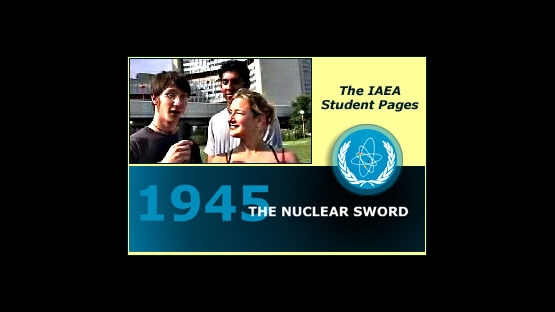Three university students with roots in different continents took time to discover another world this summer: the nuclear world of the IAEA, which this July marked its 45th anniversary. During summer internships in Vienna, they researched and reported on the IAEA's work, from safety to safeguards to everyday applications in fields of nuclear science and technology. Along the way, they spoke with Agency specialists from different countries who work at research laboratories, inspect nuclear facilities, and analyze tomorrow's energy options.
Their assignment? To provide their own perspectives of the IAEA's work, and to lay the groundwork for a planned Youth Section on the Agency's WorldAtom web site. Over a six-week period, Netta Goldfarb, Rayul Iyengar, and Jonathan Voth joined forces with web consultant Natalija Schmid, working with the Division of Public Information's WorldAtom team. The project enabled Netta, Rayul, Jonathan and Natalija to research, plan, and produce multimedia web pages about the Agency as they heard, saw, and experienced it.
What did they discover? For one thing, the students learned that the IAEA's work in nuclear science and technology takes people beyond the popular visions of mushroom clouds or cooling towers. The work is rooted in laws, regulations, codes, and procedures that run the gamut of nuclear applications, and engages scientiists, engineers, lawyers, economists, environmentalists, and managers from many fields and disciplines. A big part of the work excited and motivated the project team to devote long hours to their project. They learned about the many dimensions of the IAEA's technical, scientific, and political world -- and the challenges of explaining it in language people can easily understand. In the end, they produced impressive insights into slices of an IAEA world that in many ways is bigger and more diversified than first imagined.
The student project offers lessons to build on. It's no secret that nuclear science and technology are not attracting young people to classrooms and careers as they once did. University programmes in many countries are facing problems that hold industry repercussions down the line, creating concerns about the future base of knowledge and expertise in nuclear fields. One IAEA programme, for example, on the management of nuclear knowledge, is looking closely at the issue, its ramifications, and ways to bring countries together to solve problems.
Having students like Netta, Rayul, and Jonathan learn first-hand about nuclear technologies and the organizations involved with them may be one step in the right direction.


